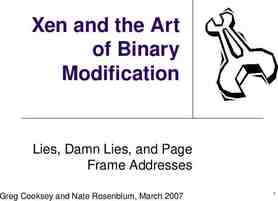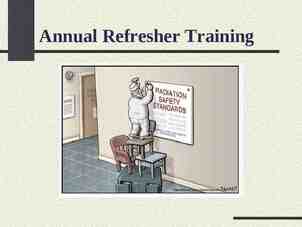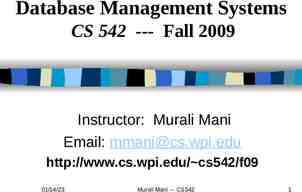Wound Care Education Victoria A Berkley, RN Fort Hays State University
24 Slides4.82 MB

Wound Care Education Victoria A Berkley, RN Fort Hays State University

Overview of Community The community in which I hope to bring change is patients receiving treatment for wounds at MidAmerica Rehabilitation Hospital in Overland Park, KS. The patients treated at MidAmerica Rehabilitation Hospital reflect the surrounding communities as the hospital treats patients from the entire metro area and sometimes beyond.

Overview of Community Cont. MidAmerica Rehabilitation Hospital treats wounds on all three of its nursing units. These units are West, East, and South. Wound care is completed by floor nursing staff and many wounds are managed by the Wound Care Team. New wounds or at risk areas or patients are often reported by therapy staff.

Overview of Community cont. Therapy staff consists of Physical, Occupational, and Speech therapists with most wound related reporting provided by Physical and Occupational therapy. Nursing staff are able to consult the Wound Care Team for wound management on any patient. Physicians are able to consult the Wound Care Team and/or a physician specializing in wound care on any patient.

About MidAmerica Rehabilitation Hospital Location 5701 W 110th Street, Overland Park, Kansas 66211 Years of operation: 28 98 Beds on three units 39 semi-private, 20 private 106,000 square feet on two levels Inpatient rehab on second floor Outpatient on first floor

Conditions Treated Stroke Amputations Arthritis Brain Injury Burns Hip Fractures Joint Replacement Multiple Trauma Neurological Disorders Other Orthopedic Injuries/Conditions Spinal Cord Injury Cardiac Pulmonary

Joint Commission Accreditations Stroke Amputee Brain Injury Spinal Cord Injury

Community Culture Our mission To be the healthcare company of choice for patients, employees, physicians and shareholders by providing high quality care in the communities we serve. Our values At HealthSouth, the cornerstone of our operations is the delivery of quality healthcare in the most appropriate, safe, patient-centered environment. We place primary value on: Quality We look to provide our patients with the finest clinicians, technology, facilities and programs available. We do this in a safe environment, responding to the needs of our diverse patient population, always working to achieve superior outcomes for each patient in a professional, caring and cooperative manner. Integrity We consider trust and integrity to be essential in all our relationships. We are committed to operating our business honestly, with financial integrity and in adherence with all federal, state and local regulatory obligations affecting the operation of our business. Cost-effectiveness We are committed to providing high-quality healthcare in an innovative, yet cost-effective manner, managing our resources wisely, and responding proactively to the changes in our industry. We seek to develop relationships with a diverse array of business partners that share similar values and conduct business in an ethical manner. Respect We respect and embrace the diversity all of our employees bring to HealthSouth. We provide opportunities for our employees’ growth and development and encourage their participation in an open and inclusive culture. In addition, we respect our patients, physicians, shareholders, business partners and vendors, recognizing the valuable role each of them plays in our business and striving to communicate with them openly and honestly.

Mission and Values in Practice Interdisciplinary team with focus on therapy and support of nursing, physicians, nutrition services, case managers, and pharmacists. Committees for each condition for which MidAmerica has accreditation Committees for self governance and improved patient outcomes: Nursing Council, Hand Washing Committee, Falls Committee, Wound Care Team

The Issue What changes can be made to wound care education to improve patient readiness for wound management after discharge? Who is providing wound care education? Is staff training needed? What is the content of the education? Are teach-back, demonstration, handouts, illustrations, etc. being used? How do we know that the patient understands?

Addressing the Issue There have been attempts to deal with the issue in the past Pamphlet that staff could fill in wound care education for patient before discharge Education of patients by Wound Care Team Encouragement of floor nurses of educate affected patients on the care of their wounds starting at admission Wound and Skin Care Protocol

Problems Addressing the Issue Funding has limited the presence of Wound Care Professionals in the building to one at one time without director approval Floor nurses not comfortable with wound care material Floor nurses feel they do not have time for wound care education Unnecessary consults to Wound Care Team that use up resources

Who Can Solve the Problem Wound Care Team Streamline Wound Care education Manage current resources in an efficient and cost effective manner Nursing Take responsibility for education of their patients Decrease unnecessary consults to Wound Care Team Management Support increased resources for wound management and staff support

Social Impact Apathy of relevant staff Staff feels as though wound care is an extra responsibility for which they have limited or no time. Wound care education is less of a priority Lack of understanding of wound care by patients Patients discharge home without a thorough understanding of wound management. This increases risk for hospital readmission for wound management

Resources Available to Staff Wound and Skin Care Protocol Developed by the Wound Care Team, approved by physician board annually Wound Care and Infectious Disease Binders Contains protocols, tips, cheat sheets for staff reference Wound Care Team Rounds Tuesdays and Wednesdays Wound Care RN, BSN Wound Care Physician Rounds Mondays and Thursdays

Wound Care RN, BSN Audits all new admissions for existing wounds, incisions, and at risk conditions Ensures that wound treatment and preventions orders are in place and being implemented Resource for floor staff Monitors trends in existing wounds, in-house wounds, improvements, and worsening of wounds

Interventions Primary Low air loss mattresses, wheelchair cushions, heel boots, turn schedules, up/down schedules for at risk patients Secondary Admission skin assessment, skin assessments every shift Tertiary Wound and Skin Care Protocol, consults to Wound Care Team and Wound Care Physician

Strengths of the Community Interdisciplinary collaboration in wound detection Therapy and nursing work together to monitor patients for alterations in patient skin integrity Interdisciplinary collaboration in wound treatment Therapy and nursing work together implementing pressure relief strategies. Nutrition services assesses dietary needs, adjusts diets orders, and provides supplements Wound Care Team Members of the Wound Care Team are able to assist other floor nurses in assessment and treatment of alterations in skin integrity

Weaknesses of the Community Head of Wound Care is also head of Infectious Disease Time is split between two specialties, taking resources from both Recommendation-one person to head each department Precedence-other HealthSouth facilities in the region with smaller patient loads with one person heading Wound Care and one person heading Infectious Disease One person from Wound Care is allowed in the building at one time except for monthly meeting Causes difficulty in performing necessary tasks and being a resource to staff and patients simultaneously. Makes it difficult for wound care clinicians to collaborate on addressing current issues Recommendation-increase approved meeting times based presentation of agenda of what is to be discussed. Use of time can further be followed with submission of meeting minutes and director presence if felt necessary Workload of floor nurses Floor nurse to patient ratio is 1:8 with a CNA assisting or 1:4 without a CNA assisting. Recommendation-resource nurse, admission nurse, discharge nurse, decrease nurse to patient ratios

Funding to Address Weaknesses Addressing staff to patient ratios Leads to less staff turnover, leading to savings on hiring and training new staff and on hiring bonuses-current sign on bonus for a full time day shift RN is 7,500 Resource nurse could also be effective in decreasing staff stress levels by assisting in alleviating workload, can decrease overtime from nurses leaving their shifts late to complete work Allows staff to better surveil their patients catch changes in condition earlier leading to fewer acute care transfers that cost the hospital money Allows staff to more thoroughly assess skin and intervene leading to fewer in-house wounds for which the hospital must cover the cost of treatment Leads to better patient care and patient satisfaction leading to more business

Changes to Wound Care Education Individualized education of each patient on care and management of their wound(s), identification of complications, and resources available to the patient Learning Needs Assessment Identification and addressing of learning and implementation barriers Evaluation of learning-surveys, teach-back method, show-me method Education of staff on Wound Care education (Flanders 2018)

Support for Change “patients receiving messages tailored to their level of readiness to change were twice as likely to remember receiving the message, to read the information, and to make a significant change in health-promoting behaviors such as improving nutrition” (Davis, Fish, Peipert, Skelton, Waterman 2015). “Nurses should assess learning needs, set learning goals with patients, plan and implement education, evaluate learning, and re-educate as needed. Teaching must be individualized and adapted to each patient’s needs and abilities” (Flanders 2018). “Clinical nurses should learn more about implementing teachback methods to improve patient out-comes, especially when teaching patients about complex chronic conditions” (Almkuist 2017).

Conclusion Patients need individualized, evidence based education on wound care management to improve patient outcomes Staff needs the resources and support to be able to realistically meet this need Management has the means to provide this support by investing in staff and patient satisfaction and reduction in sentinel eventsfalls, wounds, worsening patient status, infections

References Almkuist, K. D. (2017). Using Teach-Back Method to Prevent 30- Day Readmissions in Patients is Heart Failure: A Systematic Review. MedSurg Nursing, 26(5), 309-312, 351. Davis, L. A., Fish, A. F., Peipert, J. D., Skelton, S. L., Waterman, A. D.(2015). Applying best practices to designing patient education for patients with end-stage renal disease pursuing kidney transplant. Progress in Transplantation (Aliso Viejo, Calif.), 25(1), 77–84. http://doi.org/10.7182/pit2015415 [DocMikeEvans] D. (2014, November 26). Quality Improvement in Healthcare [Video File] Retrieved May 30, 2017, from https://www.youtube.com/watch?v jq52ZjMzqyI Flanders, S. A. (2018). Effective Patient Education: Evidence and Common Sense. MedSurg Nursing, 27(1), 55-58. http://www.midamericarehabhospital.com/e






